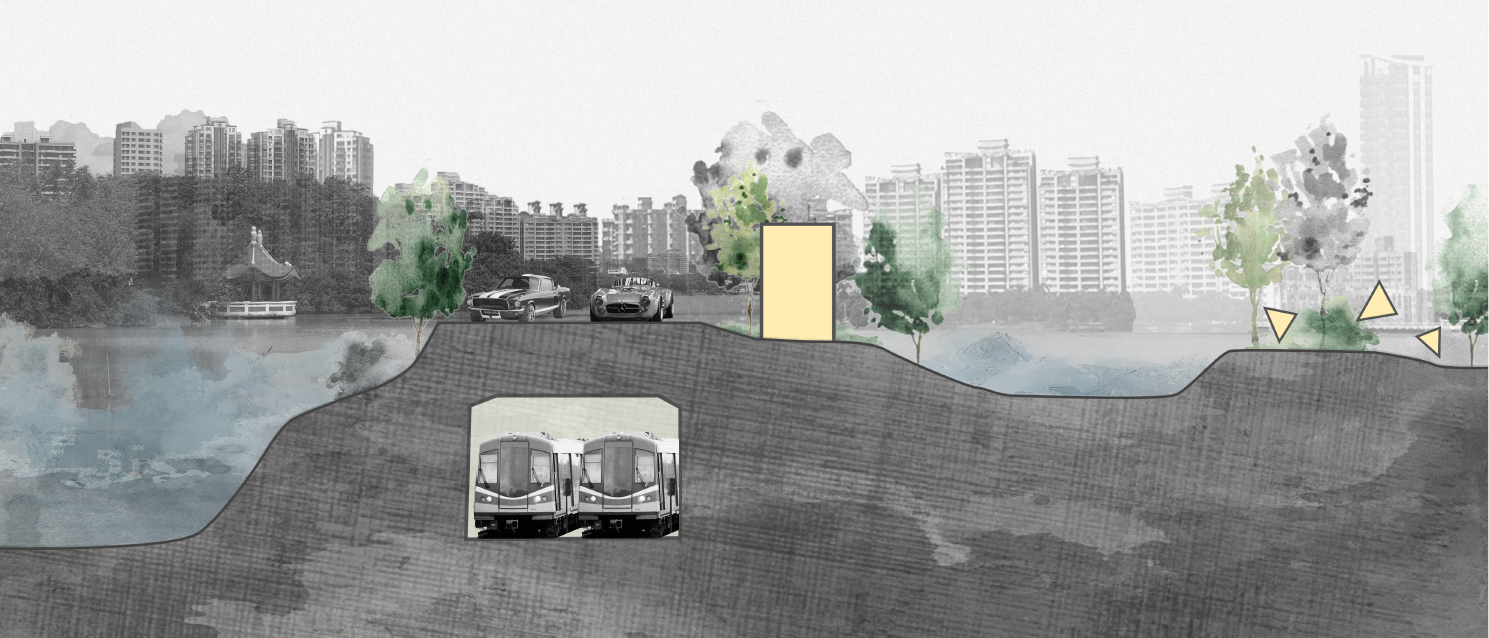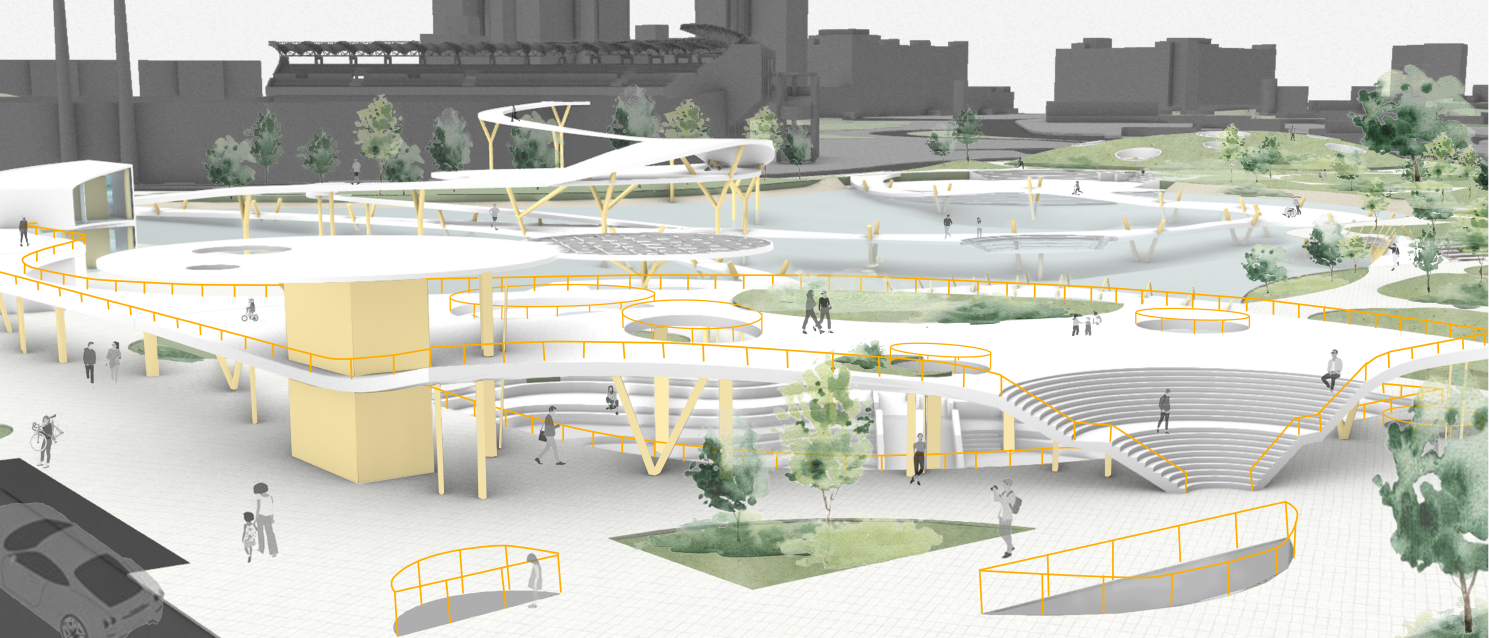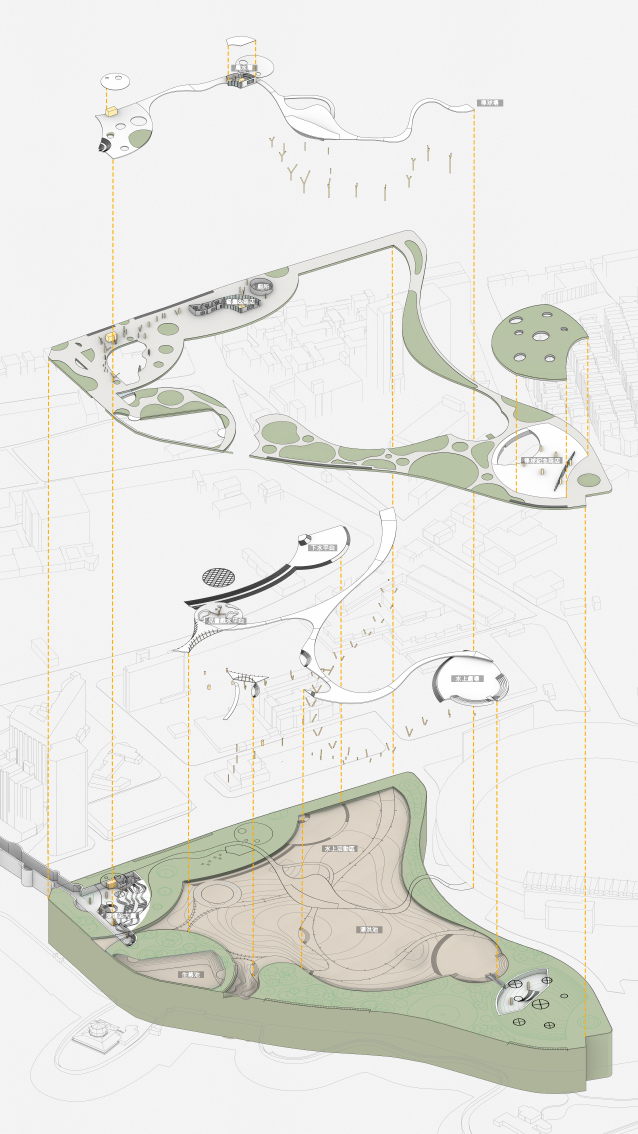再現水色
Recreate the Waterscape
黃筱筑


都市開發與自然生態的碰撞
設計說明
逐漸消失的小貝湖再次面對開發,自然與人為,結果會不一樣嗎?
基地
高雄市鳥松區小貝湖遺址
澄清湖是我從小長大的地方,而都市開發同樣改變著這塊地。
澄清湖是曹公圳灌溉系統的一部分,也是目前高雄最大的自來水來源。其原名大貝湖,與小貝湖曾是水位高低差距很大的調節性湖泊。1980年代,為了興建長庚醫院與棒球場,填平了小貝湖大部分區域,如今只剩下幾個小池塘,同時也造成周遭屢次淹水。在未來,這塊土地將重新開發,更有捷運站駐紮。然而,政府的提案卻被居民反對,生態、水質及淹水等問題再次被提出。
我不希望未來的澄清湖被巨大的水泥森林環抱。
開發是需要的,而捷運的興建也是必然的,但我希望能留下一個天際線的缺口,就如同在大家繁忙的生活中,還能有一絲喘息的空間。也藉由回顧小貝湖、重現其原有的功能與生態樣貌,讓大家意識到都市化的影響與都市景觀和生態的重要性。
Site
Xiaobei Lake
Urban development is changing the land.
The location of Chang Gung Memorial Hospital and the baseball field was once a regulating pond, commonly known as “Xiaobei Lake”.
Nowadays, only a few small ponds remain, causing residents in the middle and lower reaches to suffer from frequent flooding.
In the future, this land will be redeveloped and a MRT station will be stationed there.
However, the government’s proposal was opposed by residents, and issues such as ecology, water quality and flooding were raised again.
For me, I also don’t want the future clarification lake to be surrounded by a huge concrete forest.
Development is needed, and the construction of MRT is inevitable.
I wish I could leave a piece of pure land, a gap in the skyline.
Just like in everyone’s busy life, there is still a little breathing space
By reviewing Xiaobei Lake, we can recreate its original functions and ecological appearance.
Make everyone aware of the impact of urbanization and the importance of urban landscape and ecology.





